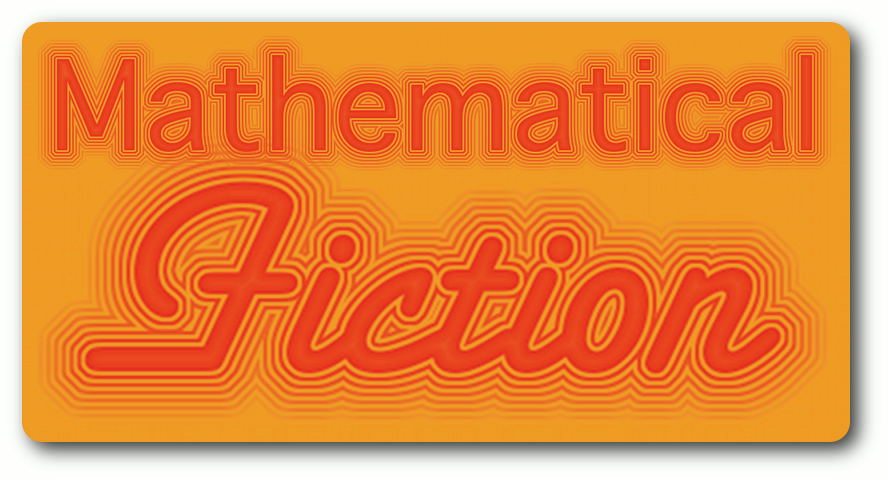
a list compiled by Alex Kasman (College of Charleston)

a list compiled by Alex Kasman (College of Charleston)
| Home | All | New | Browse | Search | About |
| ... |
|
| ... |
| Normally, I don't like works of mathematical fiction that use mathematical terminology and notation to discuss romantic relationships. They often involve groan-inducing formulae like "Pat + Sandy = Love".
However, this short story which utilizes the format of mathematical proofs to tell a love story (with a science fiction twist) does it especially well.
Written as a sequence of theorems (each numbered, stated, and then "proved"), it tells the story of someone in a long distance relationship with an astronaut.
Since the story is so short (and so good), I would urge you to obtain a copy and read it yourself before I get to any "spoilers" below. It was published in the "Futures" column of Nature in February 2023 (doi: https://doi.org/10.1038/d41586-022-04195-1). I am very grateful to Allan Goldberg for noticing this short story and bringing it to my attention.
SPOILER ALERT: Below I will discuss the ending and so you are encouraged to read the original before continuing if you can. SPOILER ALERT: Below I will discuss the ending and so you are encouraged to read the original before continuing if you can. SPOILER ALERT: Below I will discuss the ending and so you are encouraged to read the original before continuing if you can. The story goes on with "Theorem 1.2: The rebound theorem" about a seemingly successful date that unfortunately ends in a contradiction through the line "I just don't think of you like that." As expected, "Theorem 1.3: The central limit theorem" involves the emergence of normal distributions, but also dating apps and questions about "that nice astronaut boy" from a parent. The formula s=d/t comes up in each of the theorems all the way through "Theorem 1.5: The end-of-the-world theorem". Here it is revealed that the astronaut was attempting to save the planet Earth from an imminent disaster, and that the attempt was unsuccessful. Consequently, the value of t approaches zero, representing the infinitesimally small amount of time they have left to live. Under these circumstances, the formula takes on a whole new meaning, as does their relationship. To me, this was a very clever way to use mathematics in a work of fiction. There are a few other works that I find similar to this one in some ways, especially Division by Zero and Problems for Self-Study, but this ending still seems quite unique to me. |
| More information about this work can be found at www.nature.com. |
| (Note: This is just one work of mathematical fiction from the list. To see the entire list or to see more works of mathematical fiction, return to the Homepage.) |
| |||||||||||||||||||||||
| Home | All | New | Browse | Search | About |
Exciting News: The 1,600th entry was recently added to this database of mathematical fiction! Also, for those of you interested in non-fictional math books
let me (shamelessly) plug the recent release of the second edition of my soliton theory textbook.
(Maintained by Alex Kasman,
College of Charleston)